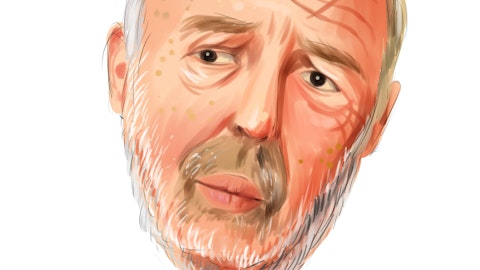Operator: Our next question comes from Meyer Shields from KBW.
Meyer Shields: You talked about keeping property PMLs broadly flat. I was wondering, if you could remind us of what the internal constraints are on that and what you’re building in for, I guess, loss trend there relative to rate increases that you’re expecting.
Dino Robusto: Yes. okay. So we don’t parse out sort of our PML accumulations. It is less about internal constraints and more simply just given what we have seen over the last decade of elevated cats and secondary type cat perils having such a dramatic impact. We’re just prudent in how we manage our cat PMLs and the reinsurance that we purchased. In terms of the property, you’ll recall early on when we saw the inflation hit, right, we had increased our property loss cost trends about 2% and we’ve kept them at the elevated levels. So clearly, the rate we’re now getting and also the TIV which is why I wanted to sort of detail that we’re being successful in getting valuations up, we’re covering — we’re clearly covering our loss cost trends there. But we had increased them about 2 points.
Meyer Shields: Okay. And I know it’s early but I was wondering whether you’ve had any conversations yet with the property quota share reinsurers. Just we’re trying to get a sense in terms of how net exposure might change over the course of this year in a tougher reinsurance market.
Dino Robusto: Yes, yes. I mean that’s — we haven’t — and I think they were all sort of consumed with the 1/1s and that made a lot of sense. You’ve got to get through the April 1s and then the June 1s. Look, I mean, all I can say is when I look at what the press has been about the activity on renewals, there’s clearly a possibility that we can get a little bit more — have to take a little bit more net. And so we’ll just — we’ll see how that plays out. And then on the pricing which obviously was quite substantial, I mean it was — it had a big variability to it. And I think, look, our overall results have been good for us and the reinsurers and we would expect to be on the better end of that. But we’ll have to see, right? To a large extent, Meyer, it probably depends also on what happens in the next several months.
You have a very active catastrophe season before June 1, that could change the calculus a little bit. But we’re being — one of the reasons why we’re prudent now about how we write property and how we look at cat PML.
Meyer Shields: Okay. That’s helpful. And then one final question, if I can. I know there was a lot of commentary in the back half of last year about sort of the sudden emergence of rate cuts in D&O. and I’m wondering whether that trajectory has changed more recently. Or is it the same intensity of competition as in previous months?
Dino Robusto: It’s — I don’t know if it’s really changed much recently. I mean it was an abrupt change which we saw obviously, going into the third and fourth quarter. I think a function, as I said in my prepared remarks is the fact that, look, D&O got over 100% rate increases during that hard market. And so I think it’s a bit of an adjustment. It’s still — our rate level still double what they were — I think we’ll — now look, I mean, if it continues to persist that way, then obviously, in a few quarters, that could be a little bit more problematic. But I’m not there yet. I think we’re going to continue to push and we have the expertise that continue to drive this thing profitably. And I think we’ve demonstrated, right, through all of our re-underwriting efforts and we’re not going to chase accounts that you can’t make a good return.
So I think it’s too early to suggest. Look, this thing is just overly competitive and it’s going to play out — continue to play out that well — that way, rather.



